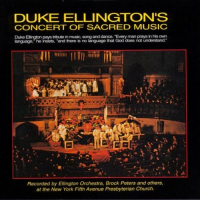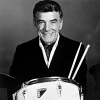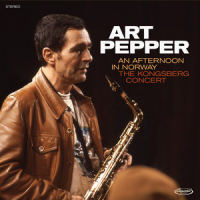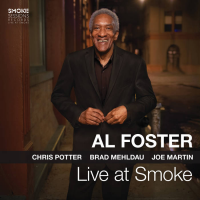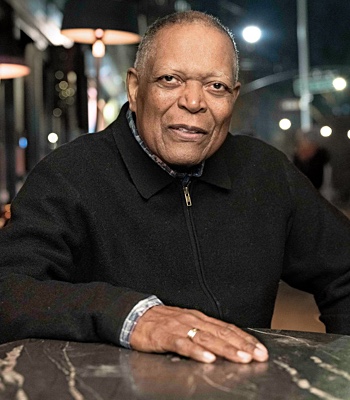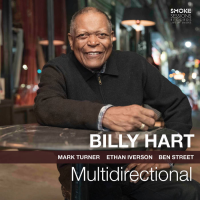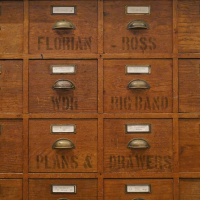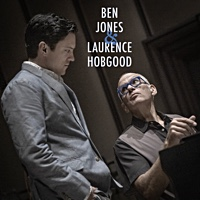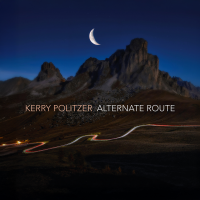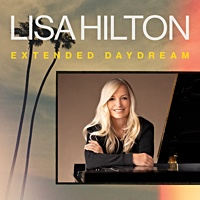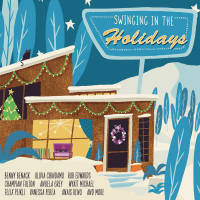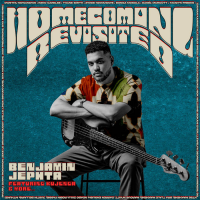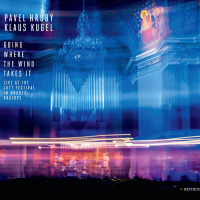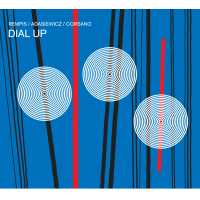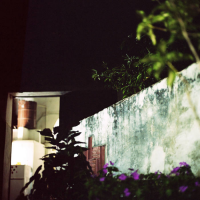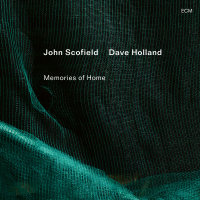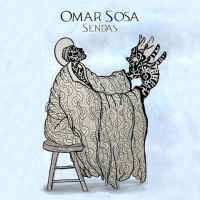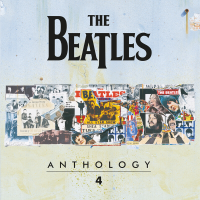Home » Jazz Articles » Extended Analysis » Duke Ellington: Duke Ellington's Concert of Sacred Music
Duke Ellington: Duke Ellington's Concert of Sacred Music
At first, Duke demurred. In his autobiography, Music Is My Mistress (Da Capo, 1976), Ellington explained why he changed his mind:
It has been said once that a man who could not play the organ or any of the instruments of the symphony, accompanied his worship by juggling. He was not the world's best juggler but it was the one thing he did best. And so it was accepted by God. I believe that no matter how highly skilled a drummer or saxophone might be, if this is the thing he does best, and he offers it sincerely from the heart in—or as an accompaniment to—his worship, he will not be unacceptable because of lack of skill or of the instrument upon which he makes his demonstration, be it pipe or tom tom.
It is likely that Ellington also saw the Grace Cathedral invitation as an opportunity to spread his ongoing message of faith, freedom and hope within the context of a sacred space. Ellington had been composing music about the history of Black people in America long before the Grace Cathedral invitation and even before his Carnegie Hall debut in 1943.
According to David Johnson (Indiana Public Media, 2022):
There were precedents for Black, Brown and Beige (Prestige Records, 1977) both in the music and historical pageants Ellington was exposed to growing up in Washington D.C., the compositions and concerts of artists such as James Reese Europe, James P. Johnson, and in Ellington's own work over the past 15 years—pieces such as "Creole Rhapsody," "Symphony In Black," and his 1941 social-significance musical revue "Jump For Joy." And Ellington had talked from time to time in interviews of an ambitious opus that would tell the story of the African-American experience, from its origins in Africa to its current state in America. It is thought by some scholars that Black, Brown and Beige grew in part out of Boola, an operatic work which Ellington had cited as being in progress throughout the 1930s.
Concert of Sacred Music
Ellington's Sept. 16, 1965, debut of his Concert of Sacred Music at Grace Cathedral is a mashup of previously recorded music, along with some new ecumenical compositions, including "In the Beginning, God." In addition to "In the Beginning, God," the Grace Cathedral concert was largely framed around three variations of "Come Sunday," Ellington's moving spiritual from Black, Brown and Beige. The Grace Cathedral concert literally began and ended with "Come Sunday."Ellington brought his entire repertoire to Grace Cathedral in a Blues and Gospel-tinged musical revue that was ironically reminiscent both of his stage shows at the segregated Cotton Club and the acerbic and provocative Jump for Joy (Jazz Life, 1985) in 1941 at the Mayan Theater in Los Angeles. There was preaching by a solemn Jon Hendricks and Jimmy McPhail sings "Ain't But the One." The Herman McCoy and Grace Cathedral choirs chime in with backup vocals and Biblical references.. Young gospel singer Esther Marrow looks nervous in her professional debut. And hoofer Bunny Briggs kicks up a storm in "David Danced Before the Lord" to close the concert. Finally, there was Duke and his incomparable orchestra with Louie Bellson on drums.
The Grace Cathedral concert opens with "Come Sunday," played by Johnny Hodges. Marrow sings "Come Sunday," followed by Briggs tap dancing to the same song played fast to close the concert.
The concert was broadcast on San Francisco's nascent Public Television Station, KQED, and is available on YouTube. But the Grace Cathedral performance wasn't released as a record. The official album was recorded at two concerts at the Fifth Avenue Presbyterian Church in New York in December 1965 and was released as A Concert of Sacred Music(RCA, 1966). Esther Marrow brings the Gospel with "The Lord's Prayer."
Second Sacred Concert
Ellington's Second Sacred Concert debuted in New York on Jan. 19,1968, at Saint John the Divine, a 7,500-seat cathedral just a couple of subway stops from the original location of the Cotton Club in Harlem. No live recording of the concert at Saint John's has surfaced, but Second Sacred Concert (Prestige, 1968) was recorded at Fine Studios in New York and was repeated and recorded at several other venues.Duke composed virtually an entirely new book for his Second Sacred Concert. He also shuffled the vocalists around to give the concert more show-biz pizzazz. Brock Peters, Esther Marrow and Jimmy McPhail were replaced by Tony Watkins, Roscoe Gil and Swedish pop singer Alice Babs. The orchestra remained mostly intact, though Sam Woodyard and Steve Little took over on drums, with Jeff Castle on bass.
In his review of Ellington's "Second Sacred Concert" for "AllMusic," Richard Ginelli wrote: "This time, the material is fresh, not a patchwork of old and new like the first concert and in an attempt to be as ecumenical as possible, Ellington reaches for novel techniques and sounds beyond his usual big band spectrum."
Introducing Alice Babs
During a 1963 tour of Europe for the State Department, Sweden asked Duke to record an album with European musicians. Culling through the recordings of artists who were suggested, Ellington came across Babs, regarded as the Swedish Julie Andrews, and something clicked.Ellington and Billy Strayhorn backed Babs on a lovely album called Serenade to Sweden (1966, Reprise), which was recorded in Paris in February and March 1963. If there were any doubts whether "Babsie" (as Strayhorn titled one of their songs together) could handle Duke's repertoire, performances like this one, recorded by Swedish Television, put them to rest.
Here's Babs and Ellington performing Strayhorn's "Take the A Train" in February 1963.
These next video clips are from a performance of Ellington's "Second Sacred Concert" recorded at the Gustaf Vasa Church in Stockholm, Sweden, on Nov. 6, 1969. The synergy between Babs and Ellington and his orchestra was magical.
Johnny Hodges accompanies Babs on "Heaven."
Cootie Williams has the solo in "The Shepherd Who Watches Over the Night Flock."
Babs, Russell Procope, Duke, the orchestra and the choir combine for "Almighty God Has Those Angels."
At the conclusion of "Freedom," sung by Tony Watkins, Babs and the choir, Duke delivers a moving eulogy to Billy Strayhorn, whose loss on May 31, 1967, affected Ellington deeply.
Third Sacred Concert: "The Majesty of God"
Ellington's "Third Sacred Concert," which premiered at Westminster Abbey in October 1973, was sponsored by the United Nations.In his essay on the "Third Sacred Concert," Gary Giddins wrote:
The 'Third Sacred Concert' is revealing, moving, and on occasion inspired. Performed at Westminster Abbey after hasty rehearsals, it is illuminating not least for showing how Ellington coped with the insoluble problem of having outlived his band. Of the major Ellington interpreters, only Harry Carney and Russell Procope were present. Cootie Williams did not make the trip and Paul Gonsalves, who did, was taken ill at the last minute; his solos were given to Harold Ashby, the last of the saxophonists called upon to retain the Ben Webster sound in the Ellington palette. The fine Swedish singer Alice Babs was recruited, however, and the maestro predictably focused the new work on her, Carney and the piano. The orchestra, a shadow of its predecessors, was relegated to the background. Most of the music acquits itself admirably on its own terms.
In this audio from Westminster Abbey, Babs sings "Is God a Three-Letter Word for Love."
Third Sacred Concert in Barcelona
The Third Sacred Concert was repeated at the Basilica De Santa Maria Del Mar in Barcelona on Nov. 10, 1973, and was one of the last times Ellington staged his show. Because of a miscommunication, there was no choir on hand for the Barcelona performance, though Babs did her best to compensate. Vocalist Anita Moore was one of many new faces on stage since the Second Sacred Concert.After Moore, Babs and Tony Watkins sing "Somebody Cares," the Barcelona concert concludes with a prayer sung by Babs in Swedish, a prayer spoken in English by Ellington, an unaccompanied solo on recorder by Art Baron, "Ain't Nobody Nowhere Nothin' Without God" sung by Watkins and "Praise God and Dance."
Ellington introduced his sacred concerts 60 years ago at Grace Cathedral as an aspirational celebration of faith, freedom and hope, and concluded them some eight years later in an exuberant and joyous Gospel revival in Catalonia, Spain. As the excitement peaked near the end of the performance, singers Gil, Watkins and Moore crashed through the "fourth wall" separating performers from the audience and gleefully strutted down the aisle boogying with the congregation as if moved by the spirit of the Holy Ghost.
Ellington died on May 27, 1974, six months after his last Sacred Concert performance.
Track Listing
In the Beginning God; Will You Be There?; Ninety Nine Percent; Ain't But the One; New World a'Coming; In the Beginning, God II; Heritage; The Lord's Prayer; Come Sunday; David Danced Before the Lord With All His Might; The Lord's Prayer II.
Personnel
Duke Ellington
pianoJon Hendricks
vocalsJohnny Hodges
saxophone, altoLawrence Brown
tromboneAlice Babs
vocalsSam Woodyard
drumsRussell Procope
clarinetHarry Carney
saxophone, baritoneArt Baron
tromboneCootie Williams
trumpetPaul Gonsalves
saxophone, tenorLouie Bellson
drumsAlbum information
Title: Duke Ellington's Concert of Sacred Music | Year Released: 1965 | Record Label: RCA Victor / Legacy
Tags
PREVIOUS / NEXT
Support All About Jazz
 All About Jazz has been a pillar of jazz since 1995, championing it as an art form and, more importantly, supporting the musicians who make it. Our enduring commitment has made "AAJ" one of the most culturally important websites of its kind, read by hundreds of thousands of fans, musicians and industry figures every month.
All About Jazz has been a pillar of jazz since 1995, championing it as an art form and, more importantly, supporting the musicians who make it. Our enduring commitment has made "AAJ" one of the most culturally important websites of its kind, read by hundreds of thousands of fans, musicians and industry figures every month.


